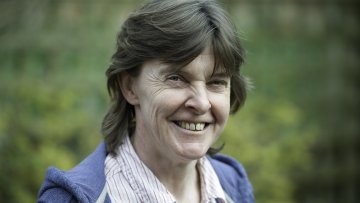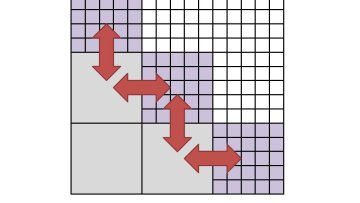Alison Etheridge FRS, Professor of Probability in the University of Oxford, has been named Fellow of the Institute of Mathematical Statistics (IMS). Professor Etheridge received the award for outstanding research on measure-valued stochastic processes and applications to population biology; and for international leadership and impressive service to the profession.
The geometry of constant mean curvature surfaces in Euclidean space
Abstract
In this talk I will begin by reviewing classical geometric properties of constant mean curvature surfaces, H>0, in R^3. I will then talk about several more recent results for surfaces embedded in R^3 with constant mean curvature, such as curvature and radius estimates. Finally I will show applications of such estimates including a characterisation of the round sphere as the only simply-connected surface embedded in R^3 with constant mean curvature and area estimates for compact surfaces embedded in a flat torus with constant mean curvature and finite genus. This is joint work with Meeks.
Inaugural Roger Penrose Lecture - Stephen Hawking CANCELLED
Abstract
In recognition of a lifetime's contribution across the mathematical sciences, we are initiating a series of annual Public Lectures in honour of Roger Penrose. The first lecture will be given by his long-time collaborator and friend Stephen Hawking.
Registration will open at 10am on 4 January 2017. Please email:
@email from that time only.
When registering please give your name and affiliation - your position, department & organisation/institution as appropriate. Or if you are a member of the General Public, please say so. Places will be allocated on a first come, first served basis with only one place per person. We will only be able to respond if you have a place or are on the waiting list.
We will be podcasting the lecture live. More details to follow.
Fashion, Faith, and Fantasy in the New Physics of the Universe - Roger Penrose SOLD OUT
Abstract
What can fashionable ideas, blind faith, or pure fantasy have to do with the scientific quest to understand the universe? Surely, scientists are immune to trends, dogmatic beliefs, or flights of fancy? In fact, Roger Penrose argues that researchers working at the extreme frontiers of mathematics and physics are just as susceptible to these forces as anyone else. In this lecture, based on his new book, Roger will argue that fashion, faith, and fantasy, while sometimes productive and even essential, may be leading today's researchers astray, most notably in three of science's most important areas - string theory, quantum mechanics, and cosmology. Yet Roger will also describe how fashion, faith, and fantasy have, ironically, also been invaluable in shaping his own work.
Roger will be signing copies of his book after the lecture.
This lecture is now SOLD OUT. Any questions, please email: @email
Parabolic problems with critical growth
Abstract
I will discuss on the existence and regularity results for the heat flow of the so called H-systems and for more general parabolic p-laplacian problems with critical growth.
The Calderón problem for the fractional Laplacian
Abstract
We show global uniqueness in an inverse problem for the fractional Schrödinger equation: an unknown potential in a bounded domain is uniquely determined by exterior measurements of solutions. We also show global uniqueness in the partial data problem where the measurements are taken in an arbitrary open subset of the exterior. The results apply in any dimension $\geq 2$ and are based on a strong approximation property of the fractional equation that extends earlier work. This special feature of the nonlocal equation renders the analysis of related inverse problems radically different from the traditional Calderón problem. This is a joint work with T. Ghosh (HKUST) and G. Uhlmann (Washington).
High Ericksen number and the dynamical creation of defects in nematics
Abstract
We consider the Beris-Edwards model of liquid crystal dynamics. We study a non-dimensionalisation and regime suited for the study of defect patterns, that amounts to a combined high Ericksen and high Reynolds number regime.
We identify some of the flow mechanisms responsible for the appearance of localized gradients that increase in time.
This is joint work with Hao Wu (Fudan).
Homogenization of thin structures in nonlinear elasticity - periodic and non-periodic
Abstract
We will give the results on the models of thin plates and rods in nonlinear elasticity by doing simultaneous homogenization and dimensional reduction. In the case of bending plate we are able to obtain the models only under periodicity assumption and assuming some special relation between the periodicity of the material and thickness of the body. In the von K\'arm\'an regime of rods and plates and in the bending regime of rods we are able to obtain the models in the general non-periodic setting. In this talk we will focus on the derivation of the rod model in the bending regime without any assumption on periodicity.



